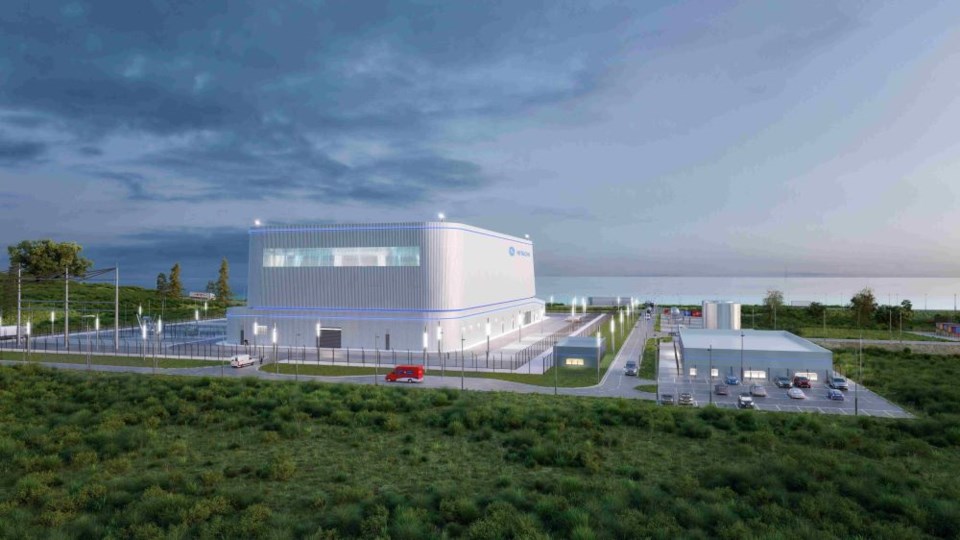ESTEVAN - The concept of small modular reactor (SMR) nuclear technology was the focal point of a public engagement session on Nov. 16 at the Estevan Elks Lodge.
Joel Cherry, who is a media relations and issue management consultant with SaskPower, and Alexis Doyle, a consultant for public engagement, were present to answer questions from the public during afternoon and evening sessions.
More than 40 people were in attendance.
“There was a variety of people,” said Cherry. “There was some local elected officials present. The mayor was in attendance, for example.”
Students from a high school physics class dropped by to learn more about the technology. Cherry said “it’s not common” to have a school class attend a public engagement event or an open house.
“Obviously nuclear power would be of interest there, and I think the novelty of it and that Estevan could very well potentially host a nuclear facility in the not-too-distant future would be of interest to high school students in the area,” said Cherry.
SaskPower has been discussing the potential for SMRs for several years. Earlier this year, the Crown corporation revealed the southeast was one of two finalists for a facility, with Boundary Dam, Rafferty Dam and Grant Devine Lake being potential candidates.
“We’re looking at any location that could potentially meet our technical specifications in our search,” said Cherry.
The Elbow area, located on the shores of Lake Diefenbaker, would be the other possible option.
“You need to have water to operate any thermal facility, but for nuclear facilities, absolutely [you need it],” said Cherry.
SaskPower is tentatively scheduled to announce the preferred site 2024, but it’s not expected to make a final decision on whether to proceed until 2029. The first SMR isn’t expected to be operating until 2034, at the earliest.
“It might be further out than people realize, but it’s different, for example, than another natural gas facility, because there’s all sorts of regulations … and standards that we have to meet before we can do it, just because the nuclear industry is much more highly regulated,” said Cherry.
Engagement sessions were held in Oxbow and Alameda on Nov. 15 and Lampman the day after the Estevan event. Cherry said there was a lot of interest in those communities as well.
People were very interested in a variety of issues, including SaskPower’s potential solutions for baseload power if conventional coal-fired power won’t be an option. Estevan has a long history of providing electricity to the province, he said.
“The federal government has mandated that we have to replace [conventional] coal by 2030, and we’re going to have to replace that with something,” said Cherry. “It’s still a pretty important part of our generation mix, especially since it is baseload power.”
Others were asking questions about nuclear waste associated with the project, land use, potential impacts on water and the nature of the project.
“It is a new thing for Saskatchewan, and even though we’re early in the process, now is the time to get out and engage people on it,” said Cherry.
SMRs don’t resemble traditional nuclear facilities, he said. Conceptual drawings available at the open house showed how the SMR facility would look when it’s complete.
“It’s not what you see at a conventional site, with large cooling towers, for example, so the scale and size of it is different from what most people think of when they think of nuclear power historically,” said Cherry.
Nuclear power would be new for Saskatchewan, and small modular reactors are new for power production in general.
SaskPower is looking to add two reactors capable of producing 300 megawatts each. Cherry said the Conference Board of Canada’s feasibility report estimated 1,700 jobs would be created per year during the construction phase, and about 185 full-time employees would support the operation of each reactor.
SaskPower wants to ensure it has a willing and engaged host community when the time comes to make a decision for its host site, Cherry said. Based on what he heard last week, he believes there are a lot of people in the Estevan area who want to have this technology.



